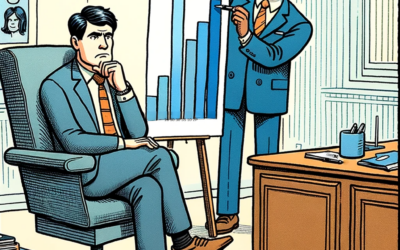
Scaling our company to one of the top 5,000 companies in the US while managing undiagnosed ADHD was a challenge. People would come in to my office and start telling me what was on their mind. Eventually they would get to the point of the story, but meanwhile my mind would race—seeking a place to put my focus.
“Can you get to the point already?” I would be thinking, but I would try to engage active listening, too, since I’d had a lot of training in that area. I would try hard to stay present and engaged, and to demonstrate that engagement to others. But it was a real struggle.
When I learned I had ADHD at age 40, I was grateful to have a label for my way of being. I read all I could on the subject. In the process, I discovered compensatory strategies for leading myself and others.
One of the most effective strategies I employed was to change how people reported to me.
I explained to employees that if they wanted to keep my attention, they should provide me with the headline, key sound bites, and the outcome before launching into the story. That way I would stay attuned during their reports, ask better questions, and leave with a better understanding.
Everyone won. I felt like I didn’t have to work so hard to process information, and my direct reports felt far less frustrated with trying to get and keep my attention. We all saved time and exerted less effort in communicating. The rhythm of my days, theirs, and the business’ all improved.
Recently, I shared this communication strategy with two business partners, one of whom has attention issues. They both said, “Wow!” and vowed to give it a shot because their coworkers love to tell stories and don’t always get to the point quickly.
You don’t have to have ADD (or ADHD as it’s more commonly called these days) to benefit from this strategy, of course. You just have to want more of your time back and have direct reports to get to the point quicker.
Starting one-on-one meetings with a headline, key sound bites, and the outcome doesn’t mean that your direct reports can’t tell stories. It just means that their stories will more likely have solid, coherent points. Your coworkers will be more prepared to meet with you, and you’ll be more prepared to listen and respond—since you know where the conversation will be heading.
As an executive coach, I am always looking for time-saving and frustration-ridding strategies that make all the difference for clients, and this one has a special place in my arsenal of tools. Give it a try!



